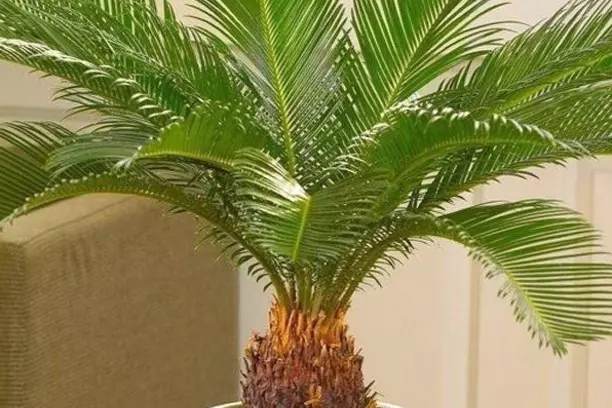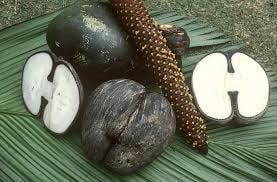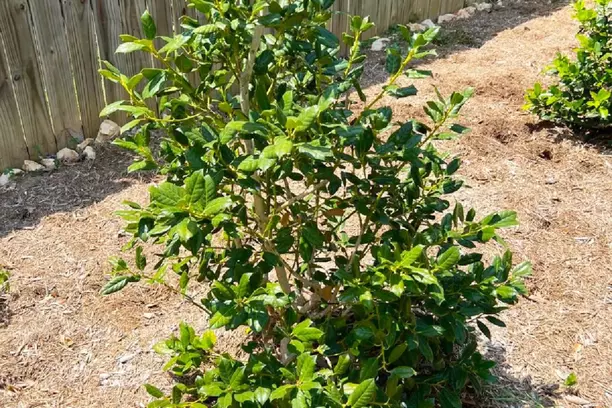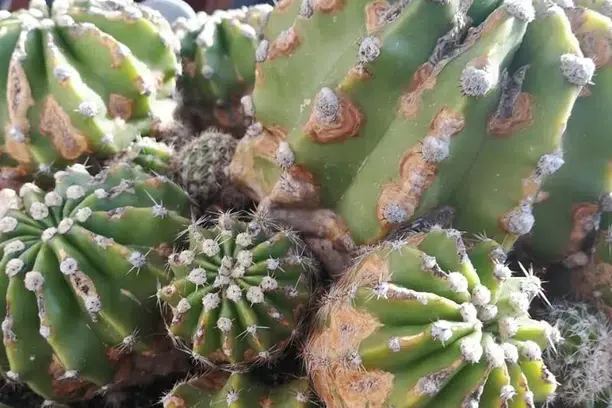Houseplants are an excellent way to purify the air and add some greenery to your indoor space. If you’re looking for some unique and beautiful plants to add to your collection, consider those native to Japan. Japanese houseplants are known for their elegant appearance, ease of care, and air-purifying qualities.
One popular Japanese houseplant is the Aspidistra elatior, commonly known as the cast iron plant. This plant is native to Japan and is known for its hardiness and ability to survive in low light conditions. It has broad, dark green leaves that add a touch of elegance to any room. Another Japanese houseplant is the Satsuki azalea, which is known for its beautiful blooms and delicate appearance. It thrives in bright, indirect light and requires regular watering to keep the soil moist.
In addition to their aesthetic appeal, Japanese houseplants have been found to have air-purifying qualities, making them a great addition to any indoor space. By adding a few of these unique and beautiful plants to your collection, you can create a calming and healthy environment in your home or office.
The Beauty of Japanese Houseplants
Japanese houseplants are known for their beauty and ability to bring tranquility to any space. With their green leaves, colorful flowers, and unique shapes, they are perfect for adding a touch of nature to your home or office. Here are a few of the most popular Japanese houseplants:
1. Japanese Peace Lily (Spathiphyllum japonicum)
The Japanese Peace Lily is a beautiful houseplant that produces white flowers and has glossy green leaves. It is known for its ability to purify the air and bring tranquility to any space. This plant is low-maintenance and easy to care for, making it perfect for beginners.
2. Japanese Holly Fern (Cyrtomium falcatum)
The Japanese Holly Fern is a stunning houseplant that has dark green leaves and a unique shape. It is perfect for adding a touch of elegance to any space. This plant is low-maintenance and can tolerate low light levels, making it perfect for those with limited sunlight.
3. Japanese Aralia (Fatsia japonica)
The Japanese Aralia is a beautiful houseplant that has large, glossy green leaves and produces small white flowers. It is perfect for adding a touch of color to any space. This plant is low-maintenance and can tolerate low light levels, making it perfect for those with limited sunlight.
4. Japanese Sago Palm (Cycas revoluta)
The Japanese Sago Palm is a stunning houseplant that has a unique shape and produces small yellow flowers. It is perfect for adding a touch of nature to any space. This plant is low-maintenance and can tolerate low light levels, making it perfect for those with limited sunlight.
In conclusion, Japanese houseplants are a beautiful addition to any space. With their green leaves, colorful flowers, and unique shapes, they are perfect for adding a touch of nature to your home or office. These plants are low-maintenance and easy to care for, making them perfect for beginners.
Popular Japanese Houseplants
Japan is known for its beautiful gardens and landscapes, and many of its native plants have become popular houseplants around the world. Here are some of the most popular Japanese houseplants:
Japanese Maple
The Japanese maple is a small, deciduous tree with delicate, lacy leaves that turn brilliant shades of red, orange, and yellow in the fall. It is a popular bonsai tree and can also be grown as a potted plant.
Azalea
Azaleas are flowering shrubs that come in a range of colors, from white to pink to deep red. They are popular for their showy blooms and can be grown as indoor plants or planted outside in the garden.
Bamboo
Bamboo is a versatile plant that can be grown indoors or outdoors. It is known for its fast growth and can be used as a decorative plant or for privacy screening.
Japanese Peace Lily
The Japanese peace lily, also known as the Spathiphyllum, is a popular indoor plant known for its attractive foliage and white flowers. It is easy to care for and can help purify the air in your home.
Japanese Stone Crop
Japanese stone crop, also known as Sedum, is a succulent plant that is easy to care for and can be grown indoors or outdoors. It is known for its fleshy leaves and star-shaped flowers.
Japanese Fern Tree
The Japanese fern tree, also known as Cycas revoluta, is a slow-growing plant that can be grown indoors or outdoors. It is known for its feathery fronds and can be grown as a bonsai tree.
Japanese Painted Fern
The Japanese-painted fern is a colorful fern with silver and purple fronds. It is a popular indoor plant and can also be grown outdoors in shaded areas.
Japanese Elm Bonsai
The Japanese elm bonsai is a popular bonsai tree known for its graceful, arching branches and small, serrated leaves. It is a great choice for beginners and can be grown indoors or outdoors.
Japanese Bamboo
Japanese bamboo is a fast-growing plant that can be used for privacy screening or as a decorative plant. It is known for its tall, slender stalks and delicate leaves.
Japanese Aralia
The Japanese aralia, also known as Fatsia japonica, is a popular indoor plant known for its large, glossy leaves and small white flowers. It is easy to care for and can grow up to 6 feet tall.
Fatsia Japonica
Fatsia japonica, also known as the Japanese aralia, is a popular indoor plant known for its large, glossy leaves and small white flowers. It is easy to care for and can grow up to 6 feet tall.
Camellia Japonica
Camellia japonica is a flowering shrub that is popular for its showy blooms. It comes in a range of colors, from white to pink to red, and can be grown indoors or outdoors.
Hosta
Hostas are popular shade-loving plants known for their attractive foliage. They come in a range of colors and can be grown indoors or outdoors.
In conclusion, these are just a few of the many popular Japanese houseplants. With their unique beauty and easy care, they are a great addition to any home or garden.
Caring for Japanese Houseplants
Light Requirements
Most Japanese houseplants prefer bright, indirect light. They can tolerate partial sun, but direct sunlight can damage their leaves. You can place them near a window that receives bright but filtered light. If your house doesn’t have enough natural light, you can use artificial light sources such as fluorescent or LED lights.
Watering Needs
Japanese houseplants require regular moisture, but overwatering can cause root rot. Water them only when the top inch of soil feels dry to the touch. Use room temperature water and avoid using hard water, which can cause mineral buildup in the soil. Ensure that the pot has proper drainage to prevent water from accumulating at the bottom.
Soil Preferences
Japanese houseplants prefer well-draining soil that is slightly acidic. You can use a potting mix that contains peat moss, perlite, and vermiculite. Avoid using heavy soils that retain water for too long.
Temperature Tolerance
Most Japanese houseplants prefer temperatures between 60°F to 75°F. They can tolerate slightly lower temperatures in winter but avoid exposing them to cold drafts or sudden temperature changes.
Pruning and Propagating
Pruning is essential to maintain the shape and size of your Japanese houseplants. You can use clean and sharp pruning shears to remove dead or yellowing leaves, stems, and flowers. Propagating Japanese houseplants is relatively easy. You can use stem cuttings or leaf cuttings to propagate new plants. Ensure that the cuttings have at least two nodes and remove the lower leaves to promote root growth.
In summary, caring for Japanese houseplants requires regular watering, well-draining soil, bright but indirect light, and temperatures between 60°F to 75°F. Pruning and propagating are essential to maintain their health and shape.
Japanese Houseplants in Gardening and Landscaping
Japan is known for its beautiful landscapes, and the country’s native flora is a significant contributor to its beauty. Japanese houseplants are popular worldwide due to their unique beauty and the cultural significance they hold. These plants are easy to care for and can add a touch of elegance to any home or garden.
In gardening, Japanese houseplants are versatile and can be used in various ways. They can be grown in pots and displayed indoors or planted in the garden to create a Japanese-inspired landscape. Japanese gardens are known for their simplicity and harmony, and these plants can help achieve that look. They can be used to create a natural-looking pond or water feature or planted around rocks and mountains to add color and texture.
When it comes to landscaping, Japanese houseplants are a popular choice due to their stunning foliage and unique characteristics. They can be used to create a focal point in a garden or as a backdrop for other plants. Japanese temples often feature these plants, and they are an integral part of the country’s culture.
Hybrids and variegated varieties of Japanese houseplants are also popular among gardeners. They offer a unique twist on traditional Japanese plants and add a touch of modernity to any landscape or home.
In conclusion, Japanese houseplants are a versatile and beautiful addition to any garden or home. They can be used in various ways to create a Japanese-inspired landscape, and their unique characteristics make them stand out from other plants. Whether you’re a seasoned gardener or a beginner, Japanese houseplants are easy to care for and will add a touch of elegance to your space.
Japanese Houseplants and Their Cultural Significance
Houseplants are not just decorative elements in homes but also play a significant role in cultural traditions. Japan, a country with a rich cultural heritage, has a long history of using houseplants for various purposes, including aesthetic, religious, and medicinal. In this section, we will discuss some of the popular houseplants native to Japan and their cultural significance.
One of the most popular houseplants in Japan is the bonsai tree. Bonsai, which means “tray planting,” is a traditional art form that originated in China and was later adopted by the Japanese. The art of bonsai involves cultivating small trees that resemble full-sized trees in a pot or container. Bonsai trees are often associated with Buddhist monks who used them for meditation and contemplation. They are also considered a symbol of tranquility and peace.
Another popular houseplant in Japan is the cherry blossom tree. The cherry blossom, or sakura, is a national symbol of Japan and is celebrated every year during the cherry blossom festival. The festival, which has been celebrated for hundreds of years, is a time for people to gather under the cherry blossom trees and enjoy the beauty of the pink and white flowers. Cherry blossom trees are also used in religious ceremonies and are said to represent renewal and the fleeting nature of life.
In addition to bonsai and cherry blossom trees, there are many other houseplants native to Japan that have cultural significance. For example, the Japanese fern is a popular houseplant that is often used in traditional Japanese gardens. The fern is associated with the concept of yugen, which refers to an awareness of the universe that triggers emotional responses too deep and mysterious for words.
Finally, it is worth noting that Japan’s houseplant culture has had a significant impact on other countries in East Asia, such as Taiwan and China. Many of the houseplants that are popular in Japan, such as bonsai and cherry blossom trees, have been adopted by these countries and are now an integral part of their cultural traditions.
In summary, Japanese houseplants have a rich cultural significance that dates back hundreds of years. From bonsai trees to cherry blossom trees and ferns, these plants are not only beautiful but also play an important role in Japanese culture.
Frequently Asked Questions
What are some popular potted plants native to Japan?
Japan is known for its beautiful flora, and many of its popular potted plants have become popular worldwide. Some of the most popular potted plants native to Japan include the Japanese maple, the bonsai tree, the orchid, and the camellia.
What are some common house plants that are native to Japan?
Some common house plants that are native to Japan include the Satsuki azalea, the Japanese peace lily, the Japanese aralia, and the Japanese holly.
What are some popular Japanese plants that can be grown outdoors?
Japanese gardens are famous for their beautiful and unique plants. Some popular Japanese plants that can be grown outdoors include the Japanese cherry blossom tree, the Japanese maple, the Japanese iris, and the Japanese snowbell tree.
What are some common plants found in Japanese gardens?
Japanese gardens are known for their serene and calming atmosphere, and many of the plants found in these gardens reflect this. Some common plants found in Japanese gardens include the Japanese maple, the cherry blossom tree, the bamboo plant, and the Japanese iris.
What are some popular Japanese plants that can be grown indoors?
Many Japanese plants thrive indoors, making them popular choices for houseplants. Some popular Japanese plants that can be grown indoors include the peace lily, the spider plant, the snake plant, and the Japanese aralia.
What are some Japanese plants that are commonly used for bonsai?
Bonsai is the art of growing miniature trees in small containers, and many Japanese plants are commonly used for this purpose. Some Japanese plants that are commonly used for bonsai include the Japanese maple, the Japanese black pine, the Japanese white pine, and the Japanese flowering cherry.



